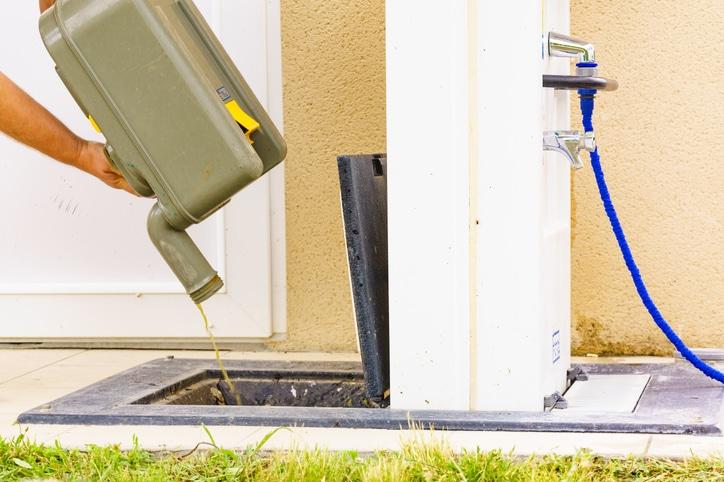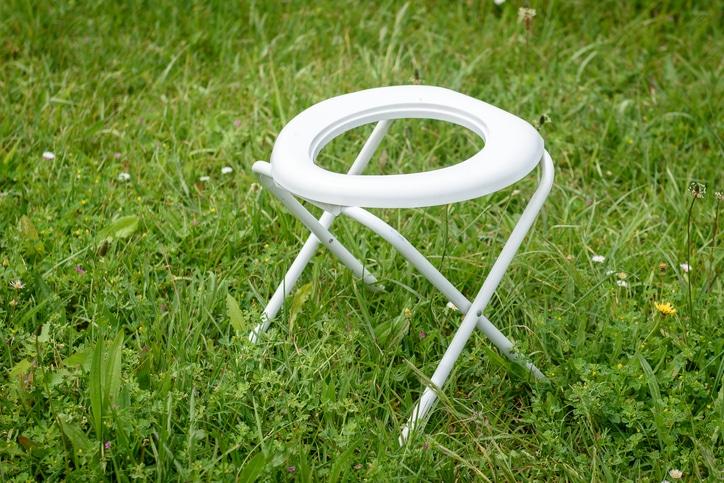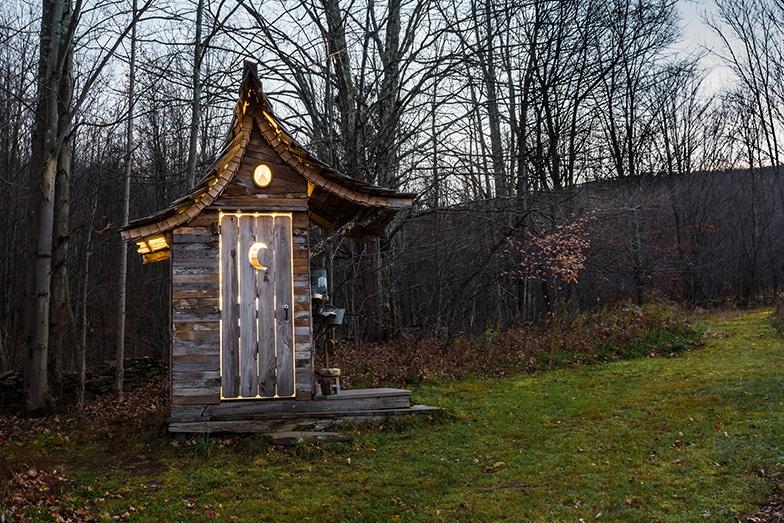Camping is a great way to get outdoors and enjoy nature, but what do you do when nature calls? Though the number one question people ask vanlifers is, “Is where do you do your business?” Traditional camping toilets can be difficult to set up and clean, and they can take valuable space in your camping gear. Portable camp toilets offer a convenient and sanitary option for campers who need to use the bathroom while away from home. Van lifers, especially DIYers, like the camp toilet option, because it’s a very easy way to add a toilet to your camper van build. But which portable toilet is right for you? These options may also go hand in hand with your adventure van shower design as well. This guide will answer all your frequently asked questions about portable camp toilets. Read on to learn more!
Composting Toilets
Composting toilets are now becoming a popular option for those looking for an alternative to the traditional flushing toilet. While composting toilets have many advantages, there are also potential disadvantages to be aware of. One of the biggest advantages of composting toilets is that they require no water to operate. This can save significant amounts of water over time, especially in areas where water is scarce.
Additionally, composting toilets can provide nutrient-rich compost for gardening or other uses. However, composting toilets can also require more maintenance than traditional toilets, and the compost produced by the toilet may not be suitable for all uses. Composting toilets also require a medium, such as sawdust or leaves, to function properly, which may not be readily available in all areas. Finally, composting toilets may produce odors if not maintained properly, and the compost produced by the toilet will need to be disposed of properly to avoid contamination.
A composting toilet is a type of toilet that uses composting to break down human waste. The process of composting is an aerobic process, meaning it requires oxygen to work. Composting toilets have a medium, such as wood chips or sawdust, that helps aerate the waste and speed up the composting process. The end result is a nutrient-rich compost that can be used as fertilizer.
As the compost breaks down, it emits a small amount of methane gas. This gas is typically vented to the outside, where it dissipates into the air. Composting toilets also have a small amount of water, which helps to keep the compost moist and prevent it from smelling.
A urine diverter is an important component of a composting toilet. It is a simple device that separates urine from solid waste. This separation is important because urine contains high levels of nitrogen, which can act as a powerful fertilizer when used in small quantities. However, too much nitrogen can overwhelm and damage plants. By diverting urine away from solid waste, it can be used as a safe and effective fertilizer. In addition, the separation of urine from solid waste helps to speed up the composting process. Urine is a relatively sterile liquid, so it breaks down quickly. However, solid waste contains bacteria that can slow down the decomposition process. By keeping the two separate, a composting toilet can achieve optimal performance.
You can add the compost to a flower garden or non-food growing garden (there is some debate about using them in a vegetable garden). You can also drop your compost safely in a trash receptacle at rest stops and gas stations.
Since you are composting your waste you should use a natural cleaner, like vinegar and water or Dr. Bronner’s Castille Soap.
The toilet themselves don’t need electricity, but if they have a venting mechanism t
The Cadillac of composting toilets is Nature’s Head. Other brands include BioLet, Ogo, Separett Villa, and Sun-Mar.
Cassette Toilets
Cassette toilets are a type of portable toilet often used in camping and other outdoor activities. The toilet consists of a small tank that holds water and waste, which can be dumped when full. Cassette toilets are typically more expensive than traditional portable toilets, but they offer a number of advantages. For example, cassette toilets are easier to clean and maintain, and they provide a more hygienic option for waste disposal. In addition, cassette toilets are less likely to leak or overflow, making them a good choice for areas with limited water resources.

Cassette toilets are typically made with two compartments: one for waste and one for water. This means that waste is sealed away from the water, preventing it from decomposing and producing foul odors. In addition, most cassette toilets have vents that allow air to circulate, further preventing the build-up of smells. As long as the toilet is properly ventilated and the waste compartment is regularly emptied, there is no reason why a cassette toilet should smell bad.
The answer may vary depending on where you are and what type of RV you have. If you are at an RV park, there is usually a designated dumping station where you can empty your cassette toilet. Some parks even have special facilities for dumping gray water. If you are boondocking, you will need to find a secluded spot away from water sources where you can dig a hole and bury your waste. You may also use a composting toilet, which doesn’t require any special dumping facilities. No matter where you are, it is important to dispose of your waste properly to prevent environmental damage and keep yourself and others safe.
Dry Flush toilets
A dry flush toilet is a type of toilet that uses no water. Instead, it relies on dry ingredients, such as sawdust or peat moss, to absorb waste. Dryflush toilets are often used in places where water is scarce, such as camping sites or RVs. They can also be used in areas where the sewer system is unreliable or nonexistent. Dryflush toilets trap waste in a dry environment, which prevents it from decomposing and producing offensive odors. To use a dry flush toilet, simply deposit your waste into the dry ingredients. When the waste has been absorbed, add more dry ingredients to the tank. When the tank is full, empty it into a larger container and dispose of it in an appropriate way. Dryflush toilets are simple, efficient, and environmentally friendly.
Using the Dry Flush is like using a diaper genie. Dry Flush toilets come with mylar liner bags that fit inside the bowl. The toilet can be flushed after peeing and pooping in it. After flushing, the liner bag collapses and twists, sealing up the waste. The cartridges can handle about 17 flushes.
They can smell pretty bad.
Laveo and Seperatt make dry flush toilets.
Dry flush toilets use disposable waste bags that may or may not contain a dry flush gel to absorb liquids.
Folding Seat Toilets
A foldable seat toilet is a type of portable travel toilet often used in woods or other places where there are no regular toilets. It usually consists of a cat hole dug into the ground, with a bucket or other container placed over it to act as a seat. Foldable seat toilets are often very simple and easy to use, making them a popular choice for camping, hiking, and other outdoor activities. However, they can also be more hygienic than regular toilets, since the user does not have to sit directly on the ground.

Portable Camp Toilets for Nomads

Depending on your travel lifestyle, you may only want a portable toilet for emergencies or on occasion. Others may need to use their camping toilets more than others. If you are an RV enthusiast who likes the idea of a self-contained toilet but doesn’t want to deal with the hassle of plumbing, a portable camping toilet may be the perfect solution for you. We’ve outlined some of the best portable toilets on the market and shared our top picks, so you can find the perfect one for your needs. The best portable toilet works with your travel life style. A camping toilet provides a convenient way to answer when nature calls.

